There is a new South African Homeschool Curriculum in town, called Footprints Nature Quest. It is bright, it is colourful, it is fun and packed with interesting facts. Loaded with colourful books to read and genuinely a fun way to learn for South African families and in their own context. Footprints Nature Quest, from the publishers of the Footprints Curriculum, Shirley Erwee and Wendy Young, who have together accumulated years and years of homeschooling experience, have put together a treasure quest.
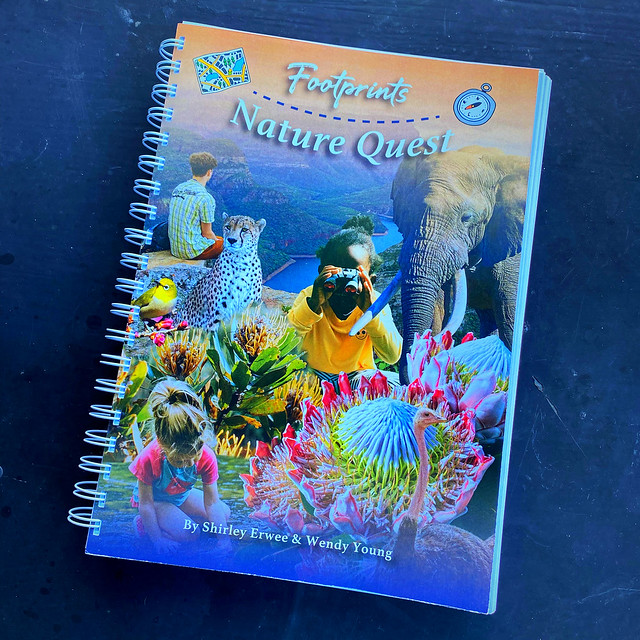
This is a multi-age, multi-discipline curriculum, where you read your way around the South African countryside and discover interesting facts and features of South African geography, plant life and wild life. It is a Christian Based curriculum, with a Charlotte Mason approach… which means you and your children will learn along side each other, exploring the countryside through the guide book and immersing yourselves in living books along the way.

The Curriculum is called “Nature Quest” because you are exploring in nature, but don’t for a second think that it is one of those curriculum plans where you have to create all sorts of nature activities for your children… the lessons are found by spending time in nature, by reading good books along side the curriculum guide, and enriching the narrative as you see fit. There are suggested projects in each chapter, but you are by no means forced to have a perfect or evolving nature table, no need to be scrabbling around the country side before dawn looking for animal tracks to make plaster casts. All the projects that are suggested and easily accessible… if you would like to create a bird feeder for observation then carry on, for example. There is a good section on how to bring more nature study into your life, and how to create nature journals as a family. And a whole lot of recommended movies.

I do want to add that this is not a wildlife curriculum, it is more about the habitats that the wildlife are in. You are not going to find pages and pages of material on the different animals, birds or marine life of South Africa, because those resources are already readily available as references. You are not going to learn about all sorts of individual species or their specific diets, tracks or skat… you are going to learn about very specific and famous animals that are part of the South African story, for example Huberta the Hippo, or the elephants of the Addo Elephant Park. And then, while they may create an overview of a sea bird, for example, they will direct you to the most excellent reference resources of Struik Nature, which are the quintessential Nature guides for South African wildlife and they do have something for everyone, from the “My First Series,” to pocket guides, to all inclusive coffee table guides.

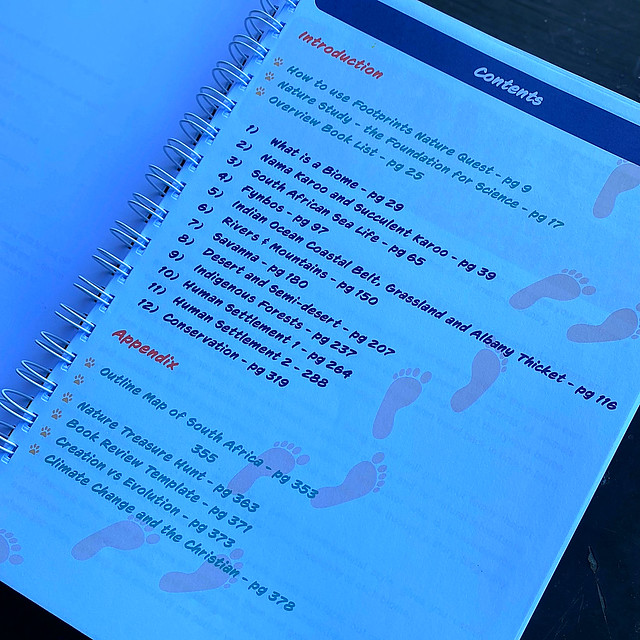
How to Use This Curriculum
Where most curriculum focus on learning about a country from the historical perspective, this curriculum is quite unique in that it looks at the geographical and natural regions of the country. You will navigate your way through several regions:
- The Nama and Succulent Karoo
- Sea Life along the South African Coastline
- Fynbos
- Indian Ocean Coastal Belt, Grassland and Albany Thicket
- Rivers and Mountains
- Savanna
- Desert and Semi-Desert
- Indigenous Forests
- Human Settlements
- Conservation
Followed by two sections on…
The journey begins as you follow along, chapter by chapter… reading a page or two a day from the curriculum guide, with your children and then enriching it with recommended books, movies, outings and websites to take your journey further. They recommend four days a week of reading and digging deeper into the text, and then a day for outings and adventures, which is pretty much how I raised my homeschoolers… with a weekly adventure in the great outdoors.
Each section (or chapter) begins with a map, so that you know where you will be exploring, then their are a few pages directed at the educator, containing: Topics to be covered, a checklist of books to have ready: picture books, chapter books and reference books, recommended books and movies, and a space for notes so that you can add books that are relevant to your particular area, or specifically your family. Immediately following the list of books is a page of short reviews, just a one or two liner about each book so that you have an idea of what you will be reading with your children. There is also a list of potential field trips and they have included outings for various places around the country.
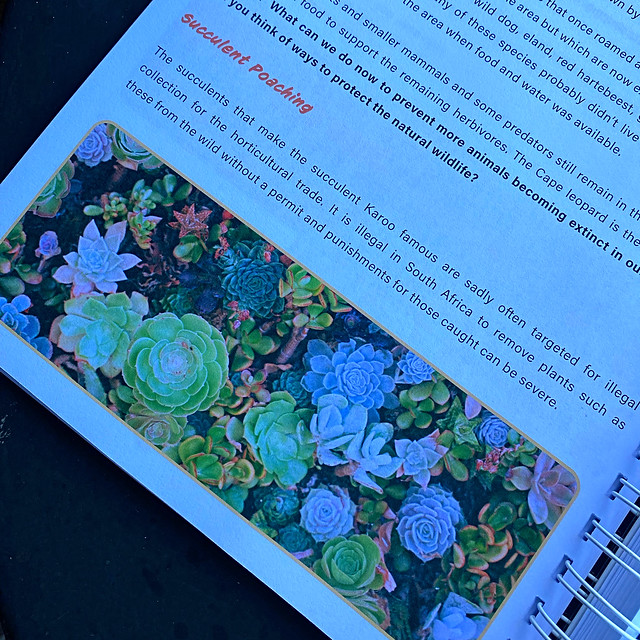
Following the checklist is the main body of the chapter… Younger children will be very engaged, looking over your shoulder at the full colour photographs and illustrations and certainly older students could read this on their own, but by reading it together as a family it becomes part of your own family culture. Each section has a guide, to help you on your journey and who personalises the experience for your readers. Your guide for the chapter may be a person, like a ranger or a marine biologist, or even an animal. A sugar bird guides the reader through the Cape Fynbos, and Huberta the hippo, takes the readers along the South African coastline.

At the end of each section there is a list of potential assignments for your students: Map work assignments, Written assignments and Hands-on Assignments, so something for every kind of student. Map work includes labelling famous places, marking interesting features and looking for things that have been mentioned in the chapter. The written assignments are creative and varied, from creating tables of facts to comic strips about something newsworthy, create a flyer, to pretending you are a famous person relevant to the chapter. The Hands-on Activities range from creating posters to cooking meals, creating slide shows and dioramas… research news stories or interview a relevant person. Lots of great ideas, all in one place and you are free to pick and choose a couple of ideas from the list and go for it.
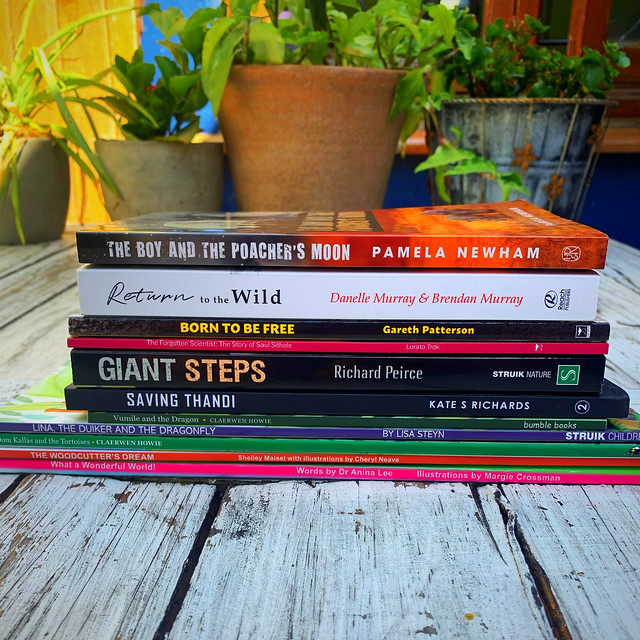
Se7en Things I Love About this Curriculum.
- The biggest advantage of this curriculum, which our family would use to supplement our personal tried and tested school curriculum, is that it has a strong South African theme. It contains South African geography, South African plant and wildlife, and South African context, whereas most curriculums available to South African children are based on information from foreign resources. All the supplemental books and reference books are all South African.
- My favourite aspect of this curriculum is the Nature Guide that takes you through each chapter: a ranger, a marine biologist, a sugar bird and even an ex-poacher. They take the readers on a guided tour through each chapter and make this quest feel like a personal adventure, an actual tour of interesting places around South Africa.
- The checklist of books, the map, the references and potential outings at the start of each section is pure gold, just having everything you might need in one place, makes this curriculum an excellent resource. That and the list of assignments takes a lot of pressure off the teacher, its all been thought out and prepared for you.
- The curriculum is called a Nature Quest for a reason, throughout the book you are invited to add treasures from each area to your treasure chest: maybe a map, a pamphlet a special pressed flower, a feather… all the sorts of little treasures that small children naturally collect, that you can keep in one place to create memories of your learning adventure.
- While each section gives you an overview of the area, what you will find there in terms of plant and animal life, the authors are not afraid to take on environmental issues facing an area. If you ever wanted to learn more about fracking in the Karoo or succulent poaching and what we can do about it, then you have come to the right place.
- The appendix includes several useful items, a map of South Africa, picture discs to cut out and stick on your wall map, a sample book review page and an essay on creation vs. evolution. But the thing that would appeal to children of all ages everywhere is the Nature Treasure Hunt, things to find on your nature journey.
- The last section, on Nature Conservation in South Africa, has only one assignment and I would talk about this assignment all the way through reading this curriculum with my kids: It is called the the Biggest Ever Nature Project and is using aspects from several sections together to create a project together, about an environmental issue in your area. Asking questions about the problem, suggested solutions and how one can get involved in the project… all the details are in the curriculum guide and it is a great way for families excited and engaged in an environmental project that appeals to them and close to home.





Let’s Talk About SOME of the Living Books Within the Curriculum:
This curriculum comes absolutely packed with a collection of fantastic books, the books enrich your learning and honestly are the heart of it all… between the pages you will learn about wildlife, caring for the earth and creating a host of family memories. I am going to share some of the avaialable books for the curriculum, because we have enjoyed and reviewed in the past, as well as plenty of “new to us” books as well.
Reference Books
- Inventors, Bright Minds and other Science Heroes of South Africa: I was thrilled to see this book on the list of reference books. I consider it an essential reference for South African homeschoolers and you can read my recent review over here.
- Exploring the Seashore: We love this series of books by Margo Branch… if you want to know about the south African shoreline… then look no further. I reviewed this book when it launched.
- Kids’ Snakes of Southern Africa by Johan Marais: This is another book that has become one of my childrens’ absolute favourite reference books ever… Johan Marais is a local expert on snakes and has written several books about snakes. You can read our interview with him here.
- The Forgotten Scientist, the Story of Saul Sithole by Lorato Trok: This is an excellent biography, short enough to read over a few days, the chapters are short and sharp. This book gets a wow, and gives an insight into a colonial South Africa, and life as a black man with a heart for science during the apartheid era. It is the story of a man called Saul Sithole, who with very little formal education, worked alongside “leading (white)” scientists of the day, learning from them and improving on their work and their presentation skills, on a sixty year journey… and yet he was never given any credit for his work, or asked for credit either. At the end of all his years of service he was given a watch as a thank you gift… it is a shocking portrayal of times past, written in a way that children can understand and see the terrible injustice of it all. This book got a WOW from my kids… it is an excellent read.

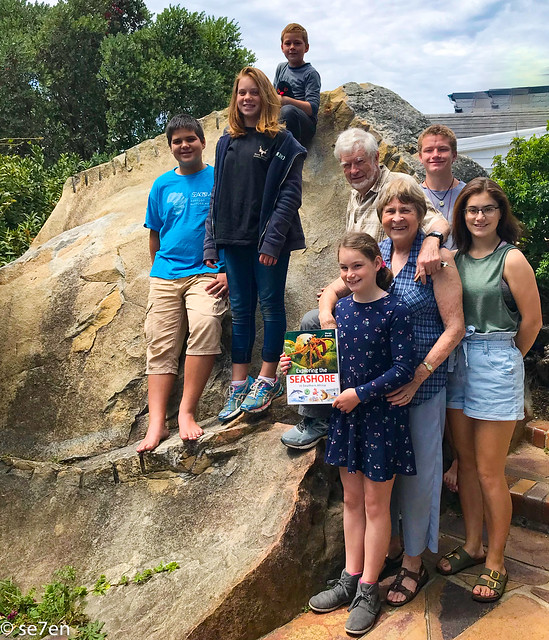
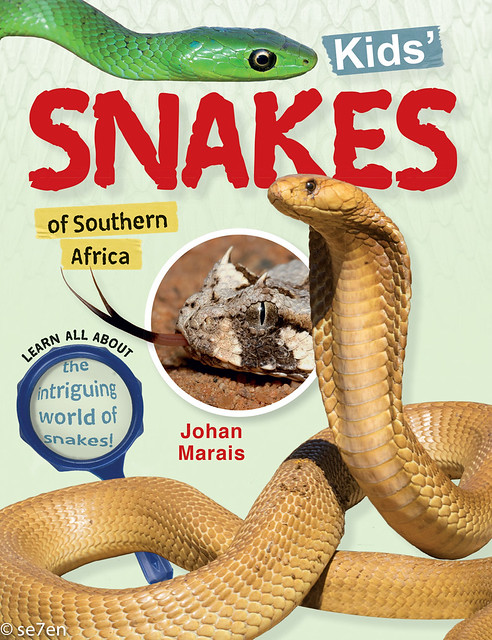
Picture Books
- Vumile and the Dragon by Claerwen Howie and illustrated by Lisa Strachan and Meg Jordi: This story is a celebration of the wonderful local little creature – the chameleon, immersed in a South African garden… the illustrations are beautiful and there is a lovely little scavenger hunt, for all sorts of local living things, at the end of the book. You can read about the book and it’s launch here.
- The Woodcutter’s Dream Shelley Maisel and illustrated by Cheryl Neave: An inspirational picture book with glorious watercolour illustrations to inspire. The story is about a local tree-fellers who plants an indigenous tree every time his job requires him to cut down a tree.
- Lina, the Duiker and the Dragonfly by Lisa Steyn: I absolutely love this book, it is one of our favourite picture books ever. You can read my review here.
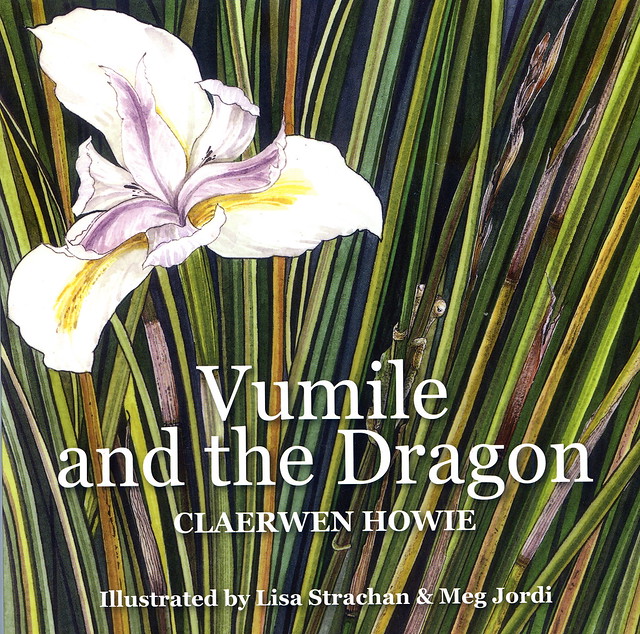

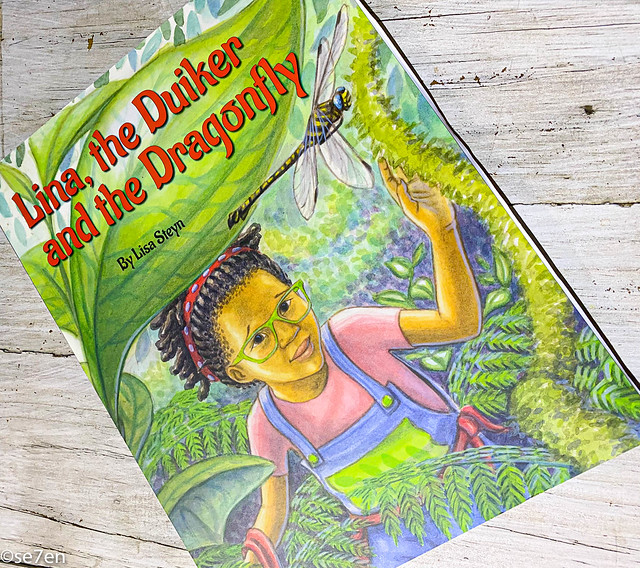
Chapter Books
- Nicole, the True Story of a Great White Shark by Richard Pearce: I attended the launch of this book a couple of years back and if you are even slightly interested in marine life or sharks… then this book is an absolute winner and you can read my author interview here.
- Oom Kallis and the Tortoises by Claerwen Howie and illustrated by Meg Jordi:
- Return to the Wild by Danelle Murray and Brendan Murray: This is an amazing story of a wild otter who is rescued by a family and then later returned to the wild. I absolutely love otters and this story was full of little details about otters as you read through the book, for example how they taught their little otter to swim. It has illustrations and lots of photographs, this book is lovely.
- The Boy and the Poacher’s Moon by Pamela Newham: This is a great adventure story about four children who win a wildlife competition and head into a guided week in a local game reserve, to observe and learn about all sorts of wildlife, including the famous rhino. They find themselves in the midst of a poaching incident. It becomes quite a thing to figure out who in the park they can trust and who is working with the poachers. This is gripping adventure writing that middle grade students will love and possibly sneak the book away to read ahead.

This is just lovely. It’s a story set in the southern cape, and as you read about local fires and tortoises you will learn all about the surrounding nature and wildlife. This book is beautifully illustrated and lots of lovely facts to learn… it should be on every nature study shelf in the country.

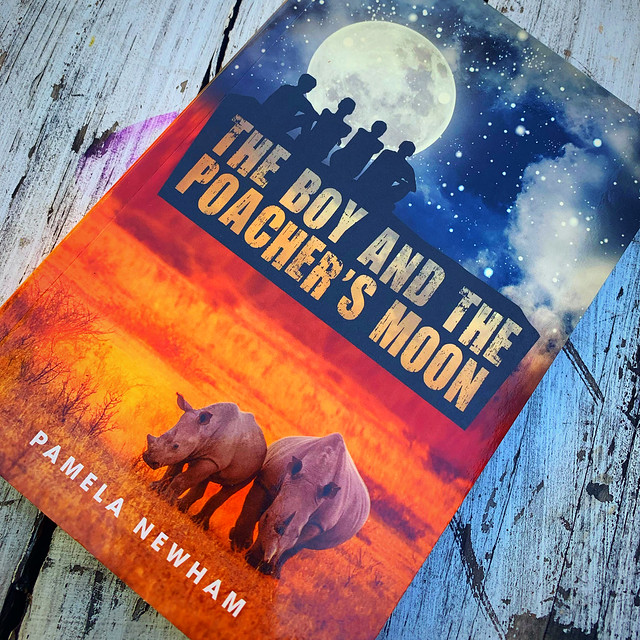
The Handbook of this Curriculum was given to us for review purposes by the authors, Shirley Erwee and Wendy Young, from Footprints Nature Quest. This is not in any way a sponsored post and opinions expressed are entirely our own.

Thank you Se7en for this amazing review of our newest offering to SA homeschoolers. You have shared the absolute best parts of our program which we got so excited about as we wrote. Thank you for sharing your thoughts with your readers, and for being willing to give us your input in the editing stages – it was invaluable.
You have written such a compelling review! I can’t wait to read all the books that arrived a few days ago! I’ve purchased the full package as an investment for my daughter’s who plan to homeschool their kiddos in a few years time.
Hay Nadene, this is such a lovely “future gift” I really enjoyed reading my way through the booklist, some of the reads were brand new to us, and I think my kids are really going to love them. Hope you have a fantastic weekend… and happy reading. All the best.
Hay Wendy… and thank you, really enjoyed going through your curriculum. Thank you so much for the opportunity to read through it for you. Wishing you all the best with your new product… happy homeschooling!!! Have a fantastic weekend!!!